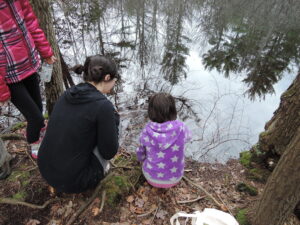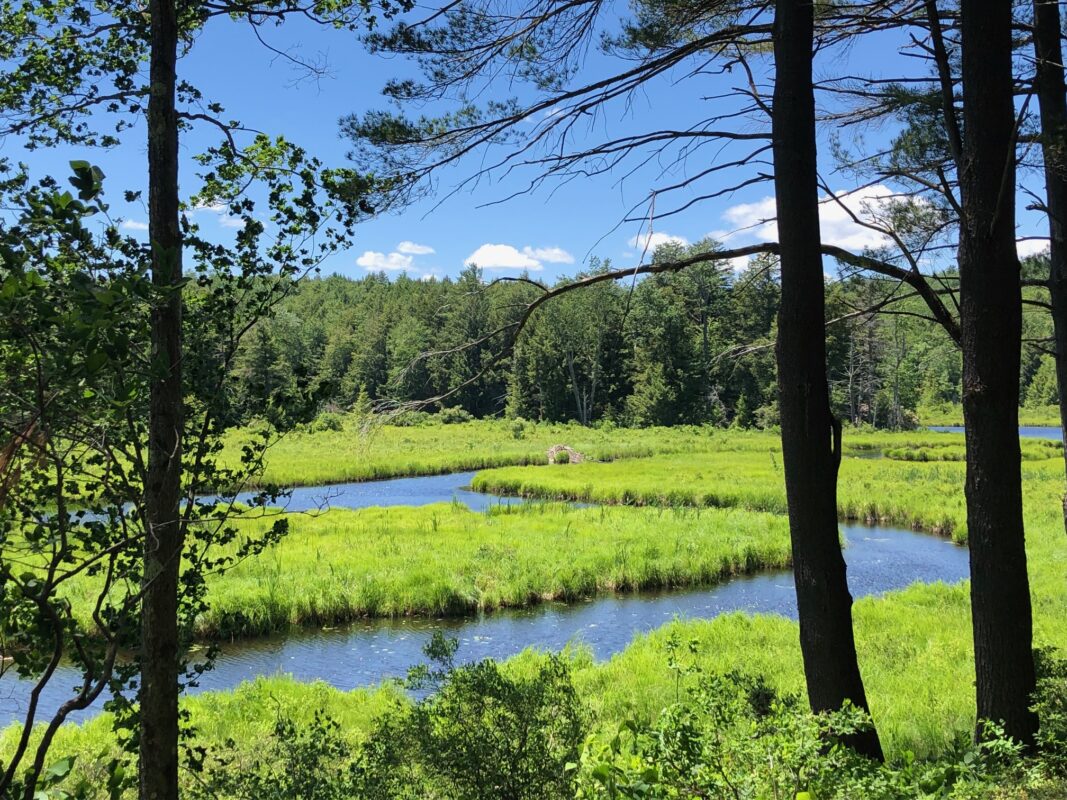by Paul Wetzel
This year brought record-breaking rainfall to Massachusetts, with flooding that destroyed crops and damaged roads. Climate change will bring more-frequent extreme weather events like these. Fortunately, conserved wetlands helped reduce the flooding that occurs during heavy rains. In this article, HLT Board member Paul Wetzel examines the many benefits that wetlands provide to both humans and to the whole ecosystem.
In exploring landscapes in The Hilltowns and beyond, one can always find low areas where water accumulates. Wetlands form in the transition zones between land and shallow water less than two meters deep. Since water collects in many places, wetlands take different forms: muddy mountain meadows, low freshwater marshes, and the banks of valley streams to name a few. As the land flattens out near the sea, wetlands can be found in the deep-water swamps along larger rivers and fresh or saltwater marshes shaped by tides along the coast.
Despite their name, wetlands are not always wet. In fact, a fluctuating water level is one of the key characteristics of a wetland and all wetland plants and animals are adapted quite well to fluctuating water levels. Wetland water levels may vary seasonally or even daily—like in tidal marshes.

In Western Massachusetts, we have vernal pools—small forested wetlands usually without outlets—which are wet from the fall to the early summer but dry out during the hottest summer months. With this seasonal water fluctuation, vernal pools provide a place for woodland amphibians to lay eggs that metamorphose into adults. If vernal pools were wet all year they might support fish, one of the predators of amphibian eggs and tadpoles.
Wetlands provide many benefits or ecosystem services for people as well. The benefits provided often depend on where a wetland is located. For example, many marshes and riparian (river-adjacent) wetlands act like giant sponges across the landscape, storing water during large rain events. This storage capacity reduces the peak water flow levels in streams and rivers which in turn reduces flooding of towns and cities built along waterways.
Similarly, coastal marshes and mangrove-forested wetlands control coastal erosion during storm events. They provide this service without large capital investments in sea walls or levees and the costly maintenance that such projects require. However, this ecosystem service only works if the coastal marshes remain intact; they cannot be cut up by channels or roadways or filled for building lots.
Wetlands are dynamic ecosystems because they exist at the land/water interface. In a small area there are plants and animals that live in the uplands surrounding the wetland, aquatic organisms that live in the water, and plants and animals living at the edges of the wetland that must be adapted to fluctuating water levels over a day or season. In addition to the local species, many animals temporarily use wetlands as migratory stopover points or as breeding areas.
The extent of biological connections in time and space for a single wetland should not be underestimated. A marsh wetland in one of HLT’s conserved lands could be a resting place for songbirds migrating from South America or a breeding pool for frogs and salamanders living in the surrounding woods. Many insects will be attracted to the variety of habitats a wetland offers, in turn attracting other animals that feed on insects. For all these reasons wetlands are often biodiversity hotspots. This intersection of species provide aesthetic and recreational benefits for people, just one more service wetlands give us!
Wetlands are dynamic ecosystems that are found throughout the landscape. They provide a variety of benefits from water storage to recreational opportunities. The conserved lands of HLT contain many wetlands. Don’t pass them by–there is no place better to be!
Wetlands are a crucial part of a healthy landscape and a healthy planet. Together, we can fight against and mitigate the damage caused by climate change by combining a reduction in fossil fuel usage with nature-based solutions like conserving and restoring wetlands, grasslands, and forests.

